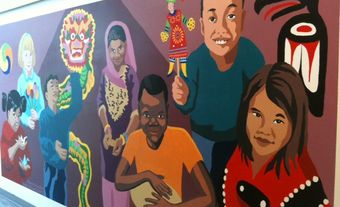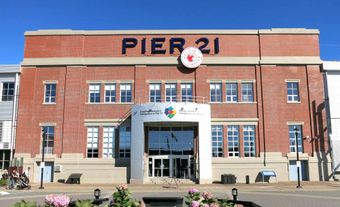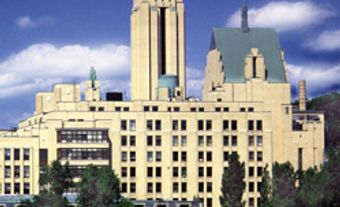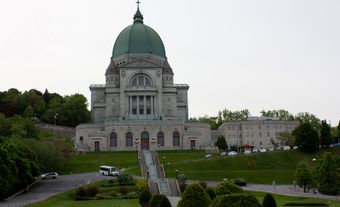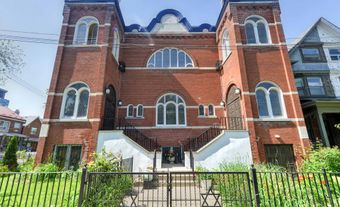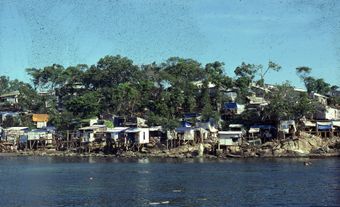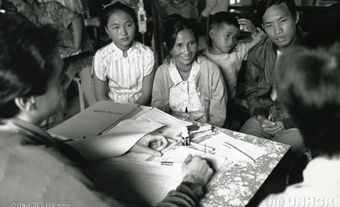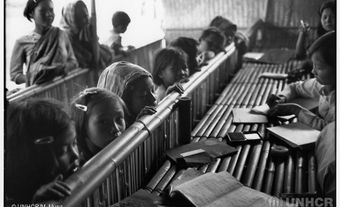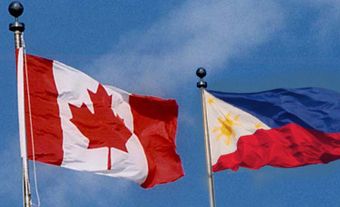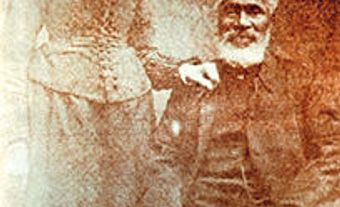Côte-des-Neiges is a Montreal neighbourhood located on the ancestral lands of several Indigenous peoples. Situated on the western slope of Mount Royal, it is part of the borough of Côte-des-Neiges—Notre-Dame-de-Grâce. Côte-des-Neiges is known for its ethnocultural diversity, due to the numerous cohorts of immigration that have settled there. (See Immigration to Canada.) According to the 2016 census, the neighbourhood has a population of 99,540. Of this number, over 54 per cent belong to racialized groups; approximately 52 per cent are immigrants; 45 per cent are allophones. Côte-des-Neiges is also home to a number of major institutions, such as the Université de Montréal and Saint Joseph’s Oratory.

Colonization
When the French colonized the Indigenous lands, the Sulpicians encouraged the development of the future Côte-des-Neiges neighbourhood. A trail was cleared to cross the mountain to the colony of Montreal. At the time, the settlement was primarily located to the east of the mountain, near the shores of the St. Lawrence River. The trail was named “chemin de la Côte-des-Neiges.” In 1698, 30 colonists established farms in the area. (See Population Settlement of New France.) In the 18th century, tanneries were also located in the area.
Two municipalities, upper and lower Côte-des-Neiges, were created in the area and took the name of the trail that linked them to Montreal. Wealthy Montrealers often visited this essentially rural and agricultural region to hunt and snowshoe.
In 1853, Montreal prohibited burials within the city. The following year, it established the Notre-Dame-des-Neiges Cemetery which, at that time, was well outside the city limits.
Institutions, such as Notre-Dame College (founded in 1869), were established in the area. In 1904, the chapel of Saint Joseph’s Oratory was built.
In 1910, the two municipalities of Côte-des-Neiges became part of the city of Montreal.
Urban Development
Now a borough of Montreal, Côte-des-Neiges developed quickly. Homes were built and a number of communities moved to this area of the city. These primarily included the Irish (who moved from Griffintown), Eastern Europeans, and the Jewish community.
The Jewish community established such important institutions as the Jewish General Hospital (in 1934). Other hospitals moved to Côte-des-Neiges to take advantage of the cleaner air. St. Mary’s Hospital and the Sainte-Justine University Hospital Centre moved into the neighbourhood in 1934 and 1957, respectively. (See Hospital.)
Major educational institutions were also established in the neighbourhood, where the Collège Jean-de-Brébeuf opened its doors in 1928. (See also Jesuits; Private School.) In 1943, the Université de Montréal moved from its original location in the Latin Quarter to its new site on the slopes of Mount Royal. Polytechnique Montréal and HEC Montréal were gradually established nearby.

The construction of the Decarie Expressway and its opening in 1967 redefined the neighbourhood’s western urban landscape.
In the 1980s, the Snowdon, Côte-Sainte-Catherine, Plamondon and Namur subway stations (orange line) began to service the neighbourhood (see Montreal Metro). In 1988, the Côte-des-Neiges, Université de Montréal, Édouard-Montpetit and Outremont subway stations (blue line) opened in Côte-des-Neiges.
Immigration and Diversity
Following the Second World War, the Immigration Policy in Canada became increasingly less restrictive. Migrants from everywhere in the world came to Montreal. ( See Immigration to Canada.) A good number of these settled in Côte-des-Neiges, where the rents were more affordable.
This was true of the Jewish migrants, many of whom were survivors of the Holocaust, who joined Montreal’s long-established Jewish community. A fair number of Sephardi Jews from North Africa, who were often francophones, also settled there. These new arrivals distinguished themselves from the rest of the Jewish community, which was primarily Ashkenazi and anglophone.
During the 1970s and 1980s, the city welcomed a large number of Vietnamese, Cambodian and Laotian migrants, including those from the Chinese diaspora, fleeing the Vietnam War and the consequences of Sino-Vietnamese tensions (see also Southeast Asian Refugees).
Beginning in the late 1960s, many women migrant workers from the Philippines settled in Montreal, more specifically, in Côte-des-Neiges. (See Filipino Canadians.) Initially, they came to Canada to work as nurses (see Nursing) and, later, as domestic workers (see Domestic Service (Caregiving) in Canada). These women often worked for well-to-do families living in the nearby neighbourhood of Westmount. (See also Remittance and the Filipino Community in Canada.)
In addition to these groups, there were also many people from the Black, Arab, South Asian and Latino communities, as well as a large number of international students who were attending the Université de Montréal, HEC Montréal and Polytechnique Montréal.
Due to the diversity of its immigrant population, Côte-des-Neiges is one of the most multicultural neighbourhoods in Montreal and is home to a wide variety of businesses. Grocery stores and restaurants offer products and foods from almost everywhere in the world. Many places of worship serve the various communities of believers. Côte-des-Neiges is home to synagogues, churches, mosques (see Islam) and pagodas (see Buddhism in Canada), as well as to many community associations. Available are translation services, support for job and housing searches, and cultural spaces for the community.
Socioeconomic Challenges
Socioeconomic disparity remains a significant challenge for the Côte-des-Neiges neighbourhood. Unemployment and poverty are more prevalent here than elsewhere in Montreal. For example, many new arrivals have difficulty entering the workforce.
There are major inequalities between the area at the base of Mount Royal and that closer to the top, south of Côte-Sainte-Catherine. Upper Côte-des-Neiges is primarily characterized by its large institutions, such as the Université de Montréal, and its more well-to-do student population. More densely populated Lower Côte-des-Neiges is the area where immigrant and racialized families tend to live. (See Immigration to Canada.)
The issue of housing is perhaps the greatest challenge in Côte-des-Neiges. The vast majority of households (79 per cent) are renters. The situation is particularly difficult for people living in poverty. Unhealthy living conditions are especially detrimental to the welfare of many residents. Access to affordable housing is problematic and the situation is exacerbated by gentrification and the lack of social housing. The many new condominiums being built in the area are beyond the reach of families of modest means. Close to 42 per cent of households spend more than half their income on rent.
Faced with these challenges, many community organizations are trying to meet the needs of the residents. The Côte-des-Neiges Community Development Corporation is bringing together a number of these organizations to coordinate and facilitate their collaborative efforts.

 Share on Facebook
Share on Facebook Share on X
Share on X Share by Email
Share by Email Share on Google Classroom
Share on Google Classroom
